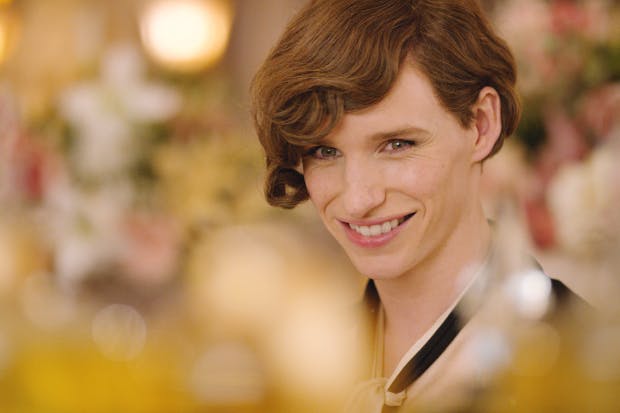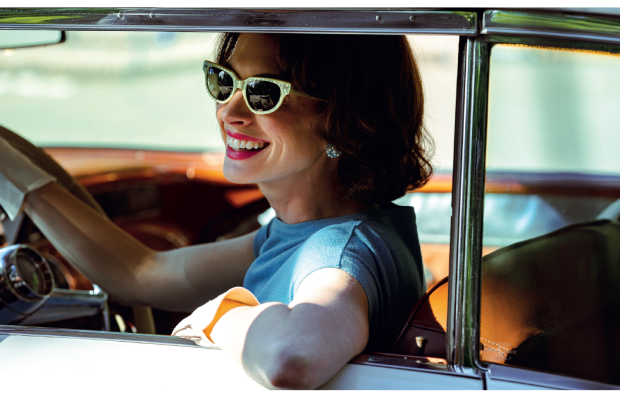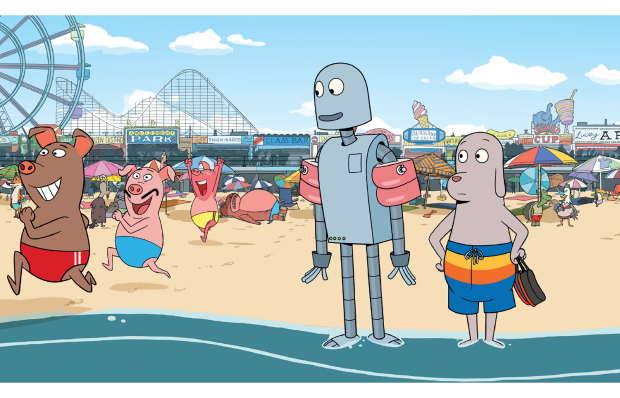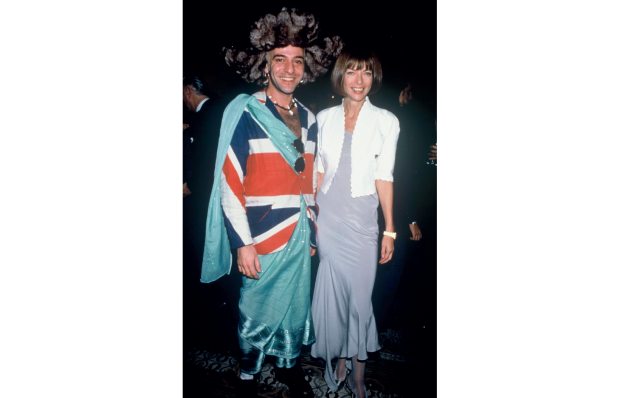The Danish Girl is based on the true (if heavily revised and simplified) story of Lili Elbe, one of the first people ever to undergo sex reassignment surgery, but while the timing of this is right — transgender issues are surely the next equality frontier — the film itself somehow isn’t. It’s OK. It’s probably passable, if you’ve got two hours to kill. But it’s repetitive, excessively polite and also, given the subject matter, surprisingly dull. It opens when Lili is still Einar, married to Gerda, and if the two ever came round for dinner you’d be mouthing over their heads: ‘Who invited them?’ And: ‘Oh boy, do you think they are ever going to leave?’
Directed by Tom Hooper, who gave us The King’s Speech, which was heavenly, then Les Misérables, which was 672 hours about a stolen bun, the film starts in 1920s Copenhagen, and, I have to say, it looks beautiful, with its painterly, soft blue interiors, white skies and gorgeous cobbled streets. Everything is meticulous and tasteful, right down to the women gutting herring down by the dock, who are so fresh and tidy and immaculate they could be serving in Fortnum & Mason. I am even thinking meticulous taste may be part of the problem here. This desperately needed to get down and dirty. Lili is not Einar in disguise. Lili isn’t Tootsie or Mrs Doubtfire or Jack Lemmon and Tony Curtis from Some Like It Hot. In fact, the opposite is true. Einar is Lily in disguise, and we needed to go deep — to know how this feels, and to understand where it might take us, should we be brave enough — but we never do.
We first encounter Einar (Eddie Redmayne) and Gerda Wegener (Alicia Vikander) when they are so happily married they are still carrying on like newly-weds, even six years in. He’s a landscape artist, she’s a portrait painter, and they are both enthusiastic for sex — ‘come back to bed, darling’ and all that — which, film conventions being what they are, is always a sign that a relationship is about to be irrevocably disturbed. This disturbance initially occurs when Gerda’s sitter, a ballet dancer, fails to turn up so Einar stands in, longingly pulling on the stockings and longingly fondling the fabric of the dress and longingly slipping on the shoes. This is a pivotal scene; a scene of both joy (realising who you truly are) and pain (realising what this is going to mean) but it’s so crudely obvious I cringed a little. Redmayne, who rightly won an Oscar for his performance as Stephen Hawking in The Theory of Everything, acts only in a series of awkward, coy smiles, with eyes downcast. That’s what he does, over and over, until I quite wanted to punch him, while crying: ‘Look up, look up! For Christ’s sake, just look up!’
Einar begins dressing as Lili, and at first it’s a bit of a game, which amuses Gerda, who passes her off as Einar’s cousin from the countryside. She also paints Lili, and the paintings sell like hot cakes, whereas she’d previously not had much luck. But when Lili attracts the attention of another man (Ben Whishaw, in a beret) it stops being fun, as Gerda realises she is losing her husband, and Lili realises she wants to be Lili permanently. Lili consults doctor after doctor, all of whom are bow-tied brutes, aside from one, who is sympathetic and agrees to operate. The medical scenes are as heartbreaking as they are harrowing, but Redmayne still doesn’t change the tempo of his performance; still coyly smiles on, with eyes downcast. (Look up, look up! For Christ’s sake, just look up! It’s not going to be what kills you!).
Every role is chronically underwritten. Neither Lili nor Gerda are interesting people beyond the situation they find themselves in. It’s as if the situation is enough, without having to create characters to go with it. This is as much Gerda’s film as Lili’s. She is being called upon to support the person she loves, while that person is effectively erasing their life together, but Vikander (and I blame the script for this, not her) is only ever allowed to express her anguish and ambivalence and confusion through tears. For her, it’s welling up, over and over. Meanwhile, one of Einar’s childhood friends pops up in the form of Matthias Schoenaerts, who is given nothing to do aside from being big, handsome and comforting.
Most irritatingly, a couple of scenes indicate the film this could have been, in that they are at least affecting. One involves a peepshow in Paris, while the other has Lili, after her first operation, working in a department store, and simply enjoying being a woman among women, which is just lovely somehow, and throws some light on why the transformation was necessary. But otherwise, this isn’t remotely compelling plus offers none of the insights I’d hoped for. And now I’ve nothing left to say apart from …Happy New Year?
Got something to add? Join the discussion and comment below.
Get 10 issues for just $10
Subscribe to The Spectator Australia today for the next 10 magazine issues, plus full online access, for just $10.














Comments
Don't miss out
Join the conversation with other Spectator Australia readers. Subscribe to leave a comment.
SUBSCRIBEAlready a subscriber? Log in